The platypus, one of the world’s most unique and fascinating animals, often sparks curiosity due to its unusual features and behavior. But as human activities and environmental changes intensify, many wonder: are platypuses endangered?
This article delves into their conservation status, the threats they face, and what is being done to protect this remarkable species.
What Makes the Platypus Unique?
The platypus (Ornithorhynchus anatinus) is a semi-aquatic mammal native to Australia. Known for its distinctive features—a duck-like bill, webbed feet, and a beaver-like tail—it belongs to a rare group of egg-laying mammals called monotremes.
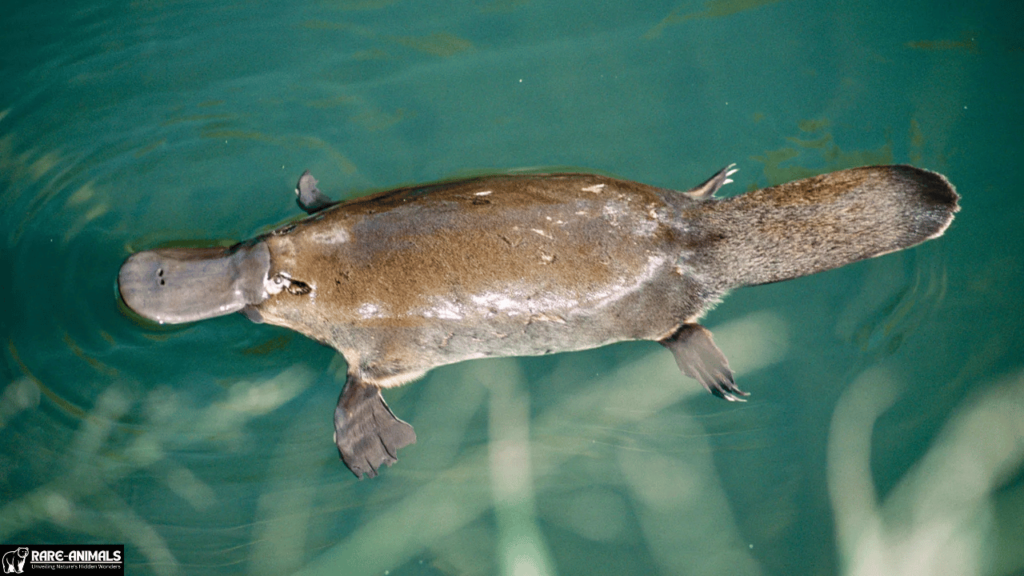
Key Characteristics of the Platypus
- Duck-billed: Their bills are equipped with electroreceptors to detect prey underwater.
- Venomous Spurs: Males have venomous spurs on their hind legs, a rare trait among mammals.
- Nocturnal Habits: They are most active at night, foraging for small invertebrates in rivers and streams.
Conservation Status of the Platypus
Current Classification
The International Union for Conservation of Nature (IUCN) lists the platypus as Near Threatened. While not currently endangered, their population is declining in many areas due to a combination of natural and human-induced factors.
Population Trends
- Habitat Decline: Deforestation and land development have reduced suitable habitats.
- Fragmented Populations: Platypus populations are often isolated, limiting genetic diversity.
- Unknown Numbers: Due to their elusive nature, population estimates are challenging, further complicating conservation efforts.
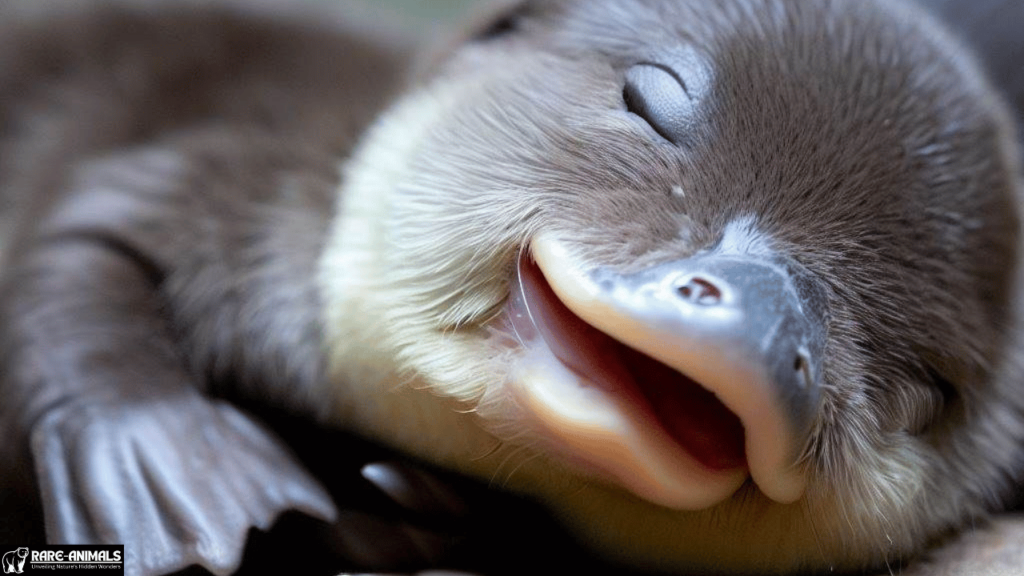
Major Threats Facing the Platypus
1. Habitat Loss and Degradation
Land clearing for agriculture, urbanization, and infrastructure development has led to significant habitat destruction.
Key Impacts:
- Loss of nesting and burrowing sites.
- Increased sedimentation and pollution in waterways.
- Reduced food availability.
2. Climate Change
Rising temperatures and altered rainfall patterns are disrupting freshwater ecosystems.
Effects of Climate Change:
- Droughts reduce water availability in rivers and streams.
- Increased frequency of extreme weather events, such as floods, which damage habitats.
3. Predation and Human Activity
- Invasive Species: Predators like foxes and cats prey on young platypuses.
- Bycatch: Accidental entanglement in fishing nets poses a significant threat.
- Pollution: Plastics, chemicals, and other pollutants harm their habitats and health.
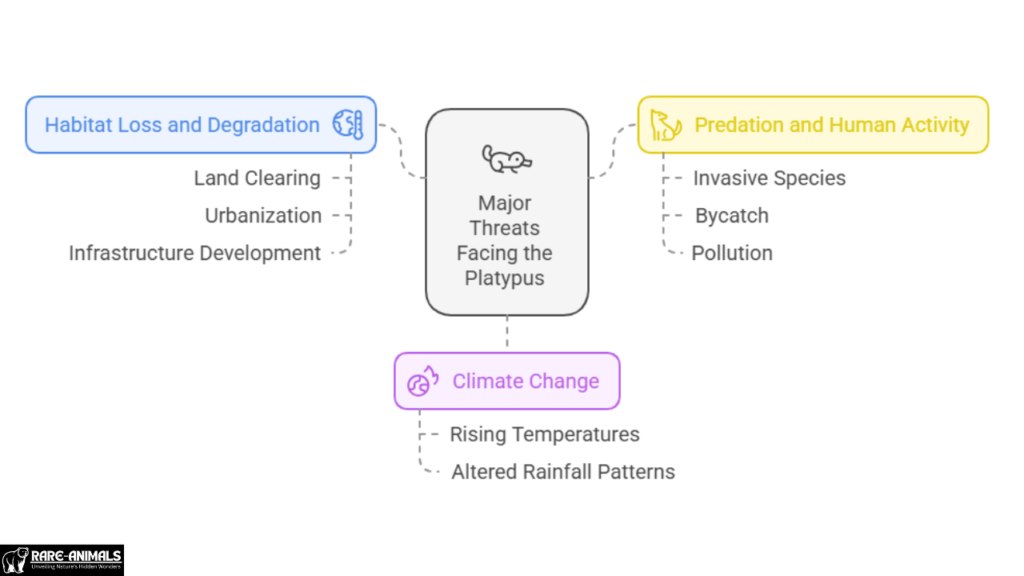
Conservation Efforts and Strategies
Protecting Habitats
Efforts to conserve the platypus focus on preserving and restoring freshwater ecosystems.
Key Initiatives:
- Establishing protected areas along rivers and streams.
- Promoting sustainable land-use practices.
- Rehabilitating degraded waterways.
Research and Monitoring
Improved understanding of platypus populations and behavior is critical for effective conservation.
Examples:
- Use of environmental DNA (eDNA) to track population distribution.
- Long-term monitoring programs to assess the impact of conservation measures.
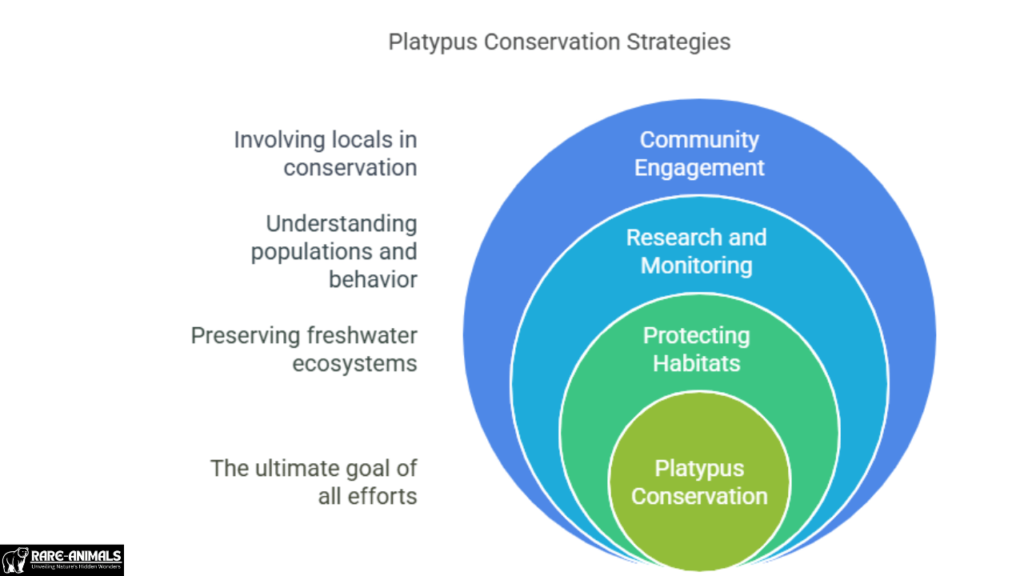
Community Engagement
Local communities play a vital role in protecting the platypus.
Actions Individuals Can Take:
- Reduce water usage to protect freshwater habitats.
- Avoid using plastic and dispose of waste responsibly.
- Participate in citizen science programs to help track sightings.
FAQs
1. Are platypuses endangered?
Currently, platypuses are classified as Near Threatened by the IUCN, but their population is declining due to habitat loss, climate change, and other threats.
2. Where do platypuses live?
Platypuses are native to eastern Australia, inhabiting rivers, streams, and freshwater ecosystems.
3. How can I help protect platypuses?
You can help by supporting conservation organizations, reducing water usage, and raising awareness about the threats they face.
4. What is being done to conserve platypuses?
Conservation efforts include habitat protection, research and monitoring programs, and community-based initiatives.
5. Why are platypuses important?
As a key species in freshwater ecosystems, platypuses help maintain ecological balance by controlling insect populations and contributing to biodiversity.
Conclusion
The platypus is a truly extraordinary creature, but its survival is increasingly at risk due to human activities and environmental changes.
By understanding their conservation status and threats, we can take meaningful steps to protect them. Join the effort to ensure that future generations can marvel at this remarkable animal.
Support platypus conservation projects and spread awareness to help safeguard their future!

Alveena is an experienced content writer with a knack for crafting engaging and insightful pieces. She thrives on breaking down complex ideas and presenting them as clear, captivating content that resonates with readers.

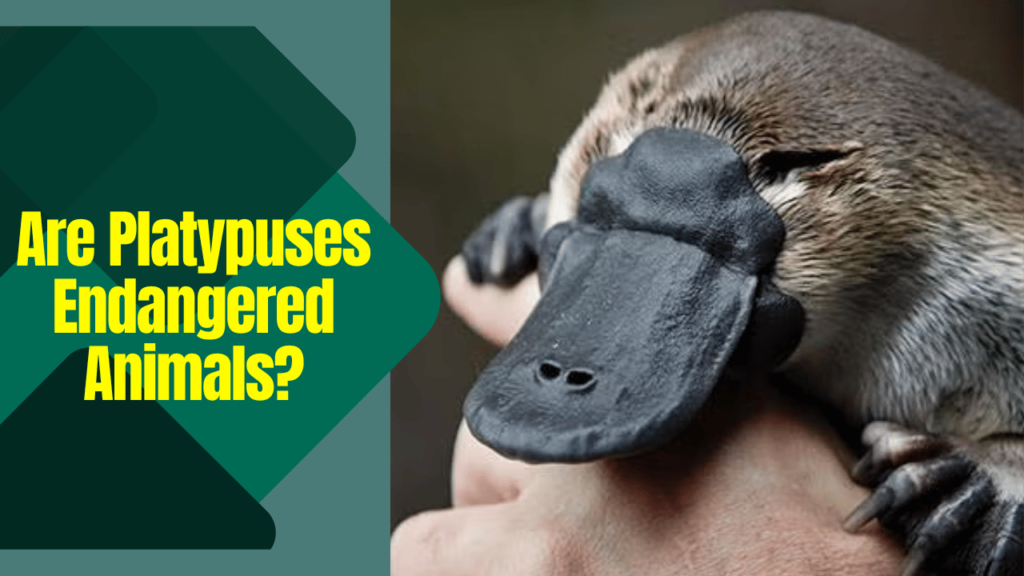

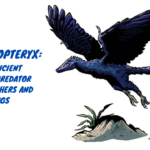

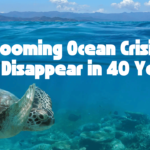


3 thoughts on “Are Platypuses Endangered Animals? Exploring Their Conservation Status and Threats”